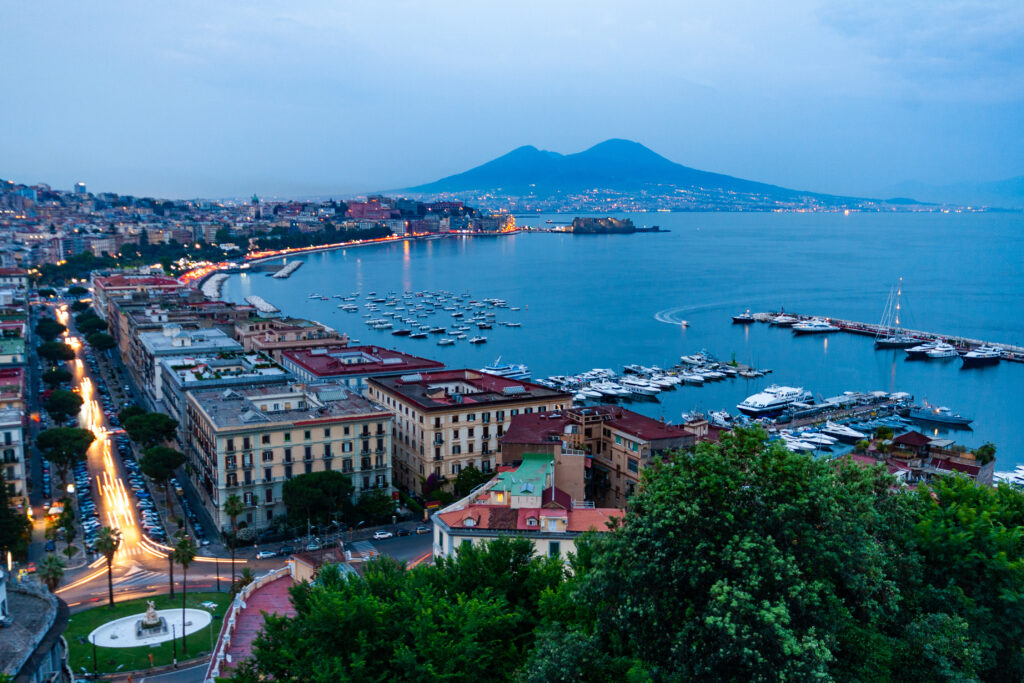Naples, one of the oldest continuously inhabited cities in the world, is a vibrant and dynamic metropolis with a history that stretches back over 2,800 years. For cruise passengers docking in Naples, the city offers a unique blend of ancient history, rich culture, and breathtaking landscapes. As the gateway to Southern Italy, Naples and its port have played a crucial role in the region’s development, serving as a crossroads of civilizations and a hub of commerce, art, and innovation.

The origins of Naples can be traced back to the 9th century BC, when the Greeks established a settlement called “Parthenope” on the site. This early colony grew and evolved into “Neapolis” (New City), becoming an important center of the Magna Graecia civilization. As Neapolis prospered, it attracted the attention of the Romans, who eventually integrated it into the Roman Empire. Under Roman rule, Naples flourished as a cultural and intellectual hub, renowned for its schools of philosophy, rhetoric, and the arts. The city’s connection to the sea was always central to its identity, with its port serving as a critical link for trade and cultural exchange throughout the Mediterranean.
Throughout the Middle Ages and the Renaissance, Naples remained a significant maritime power, even as it came under the control of various rulers, including the Byzantines, Normans, and the Spanish. The port of Naples continued to thrive, facilitating trade between Europe, North Africa, and the Middle East. During this period, the city became the capital of the Kingdom of Naples, and its strategic location and bustling port attracted merchants, scholars, and artists from across the world. This era left an indelible mark on Naples, as seen in its stunning architecture, such as the Castel dell’Ovo and Castel Nuovo, both of which stand as symbols of the city’s enduring strength and importance.
In the 18th and 19th centuries, Naples entered a new phase of growth and transformation. As the capital of the Kingdom of the Two Sicilies, Naples became one of the largest and wealthiest cities in Europe. The port of Naples continued to expand, becoming a key point of entry for goods and people traveling to and from the Italian peninsula. The city’s industrialization during this period further boosted its economy, leading to the development of new infrastructure and the modernization of the port facilities. Despite facing challenges such as political upheaval and natural disasters, Naples remained a vital and resilient city, deeply connected to its maritime roots.
Today, the port of Naples is one of Italy’s most important and busiest ports, serving as a major gateway for cruise ships, ferries, and cargo vessels. For cruise passengers, the port offers easy access to the city’s historic center, a UNESCO World Heritage site, and to other nearby attractions such as Pompeii, the Amalfi Coast, and the islands of Capri and Ischia. Naples itself is a city of contrasts, where ancient ruins stand alongside bustling markets, and grand palaces sit next to vibrant street art. The city’s rich culinary tradition, famous for its pizza, pastries, and coffee, is another highlight that draws visitors from around the world.
Naples is a city where history and modernity coexist in a lively and captivating atmosphere. Its port, which has been a cornerstone of the city’s identity for millennia, continues to be a gateway to discovery for travelers from all corners of the globe. Whether you’re exploring the ancient streets of the historic center, visiting world-renowned archaeological sites, or simply enjoying the views of Mount Vesuvius from the waterfront, Naples offers a rich and rewarding experience that is sure to leave a lasting impression.


